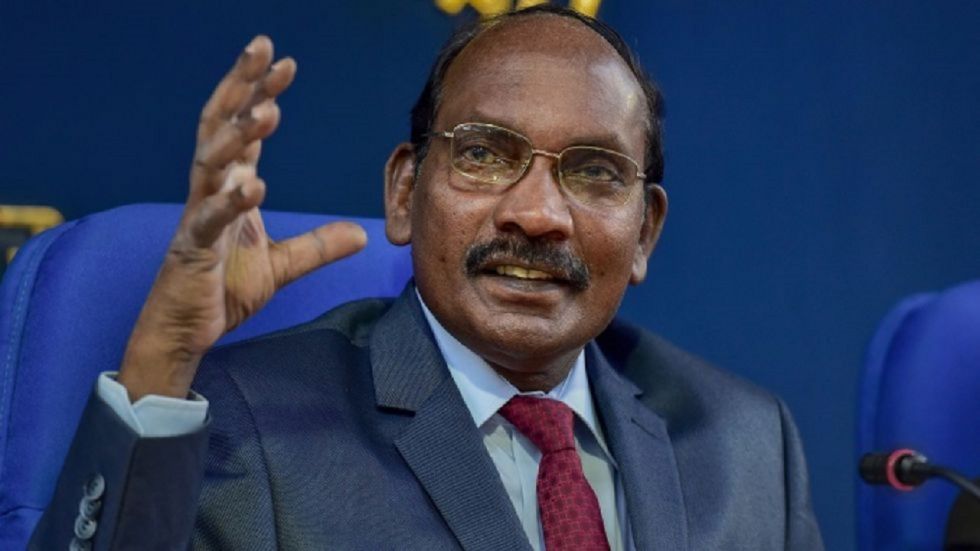 NEW DELHI : The Indian Space Research Organisation will put in all efforts to demonstrate soft landing in space in the near future and Chandrayaan 2 is not the end of story, ISRO Chief K Sivan said today.
NEW DELHI : The Indian Space Research Organisation will put in all efforts to demonstrate soft landing in space in the near future and Chandrayaan 2 is not the end of story, ISRO Chief K Sivan said today.
He said a large number of advance satellite launches are planned in the coming months.The noted aerospace scientist was in the national capital as the chief guest at the 50th Convocation of the Indian Institute of Technology (IIT), Delhi.
“You all have heard about Chandrayaan 2 mission. On the technology part – yes, we could not achieve soft landing, but all the systems functioned until 300m from the Moon’s surface. Very valuable data is available to set things right.
Let me assure that ISRO will pull all its experience, knowledge and technical prowess to set things right and demonstrate soft landing in near future,” Dr Sivan said in his address at the golden jubilee convocation of IIT Delhi.
“Chandrayaan 2 is not the end of story. Our plans on Aditya L1 solar mission, human spaceflight programme are on track. A large number of advance satellite launches are planned in the coming months. SSLV will make its maiden flight sometimes in December or January.
Testing of 200 ton semi-cryo engine is expected to begin shortly. Work is on to provide NAVIC signals on mobile phones, which will open the path to develop large number of applications for societal needs,” he added.
“We have to demonstrate the technology (soft landing). We are working out the plan, but haven’t finalized when,” said Dr Sivan responding to a query regarding the proposed second landing. Sivan said ISRO was putting its best efforts to process valuable data from Chandrayaan-2’s Orbiter which continues to revolve around the moon.
Chandrayaan-2, India’s second mission to the moon was launched on July 22, but failed to manage a soft landing on the moon, which would have been the country’s first.
While the Orbiter continues to revolve around the moon, Lander Vikram and Rover Pragyan were rendered non-functional after a hard-landing on the lunar surface on 7 September.
“On technology side, we could not succeed in completing a soft landing, but all systems of the mission, functioned well till about 300 metres from the moon surface. Despite failures, ISRO has the desire to succeed. Chandrayaan-2 is not the end of story,” said the ISRO Chief.
Highlighting ISRO’s future projects, Sivan said scientists were working on some advanced satellite missions. “Our projects on solar mission and historic human spaceflight mission are on track. The Small satellite launch vehicle (SSLV) is ready to make its maiden flight early next year,” he said.
The space agency is also working on connecting Navik Signals to cellphones to develop several related applications needs. The testing of 200 tonne semi-cryogenic engine, to power ISRO’s Reusable Launch Vehicle, is also expected to begin soon.
Urging students to take risks, he said, though ISRO faced failures while developing its own launch vehicles, it has managed to reach Mars and the Moon.
“Certain space programmes in 1960s were crazy ideas but Vikram Sarabhai saw India’s potential. When the whole world was using space technology for military domination, Sarabhai thought that for a country like India, this technology is only suitable for fast-tracking development,” said the noted scientist.
ISRO signed a Member of Understanding (MoU) with IIT Delhi to set up ISRO Space Technology Cell at the campus and work on focussed research projects in space technology. A commemorative stamp was also launched to mark the occasion.
Asserting that IITs are the “holy grail” of technical education in India, Dr Sivan said when he graduated from IIT Bombay more than three decades ago, the job scenario was not as vibrant as today.
A total of 1,217 postgraduate and 825 undergraduate students were awarded degrees at the convocation besides the distinguished alumni awards.
(Bureau Report with Agency Inputs ).
